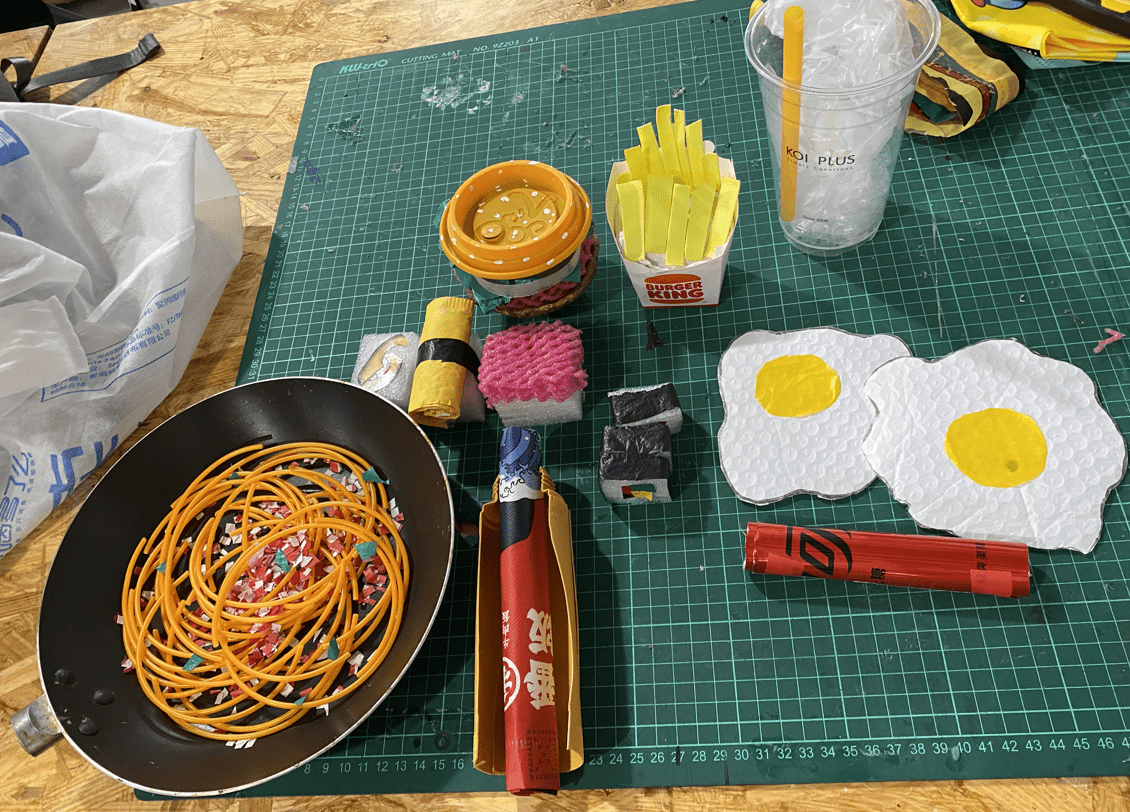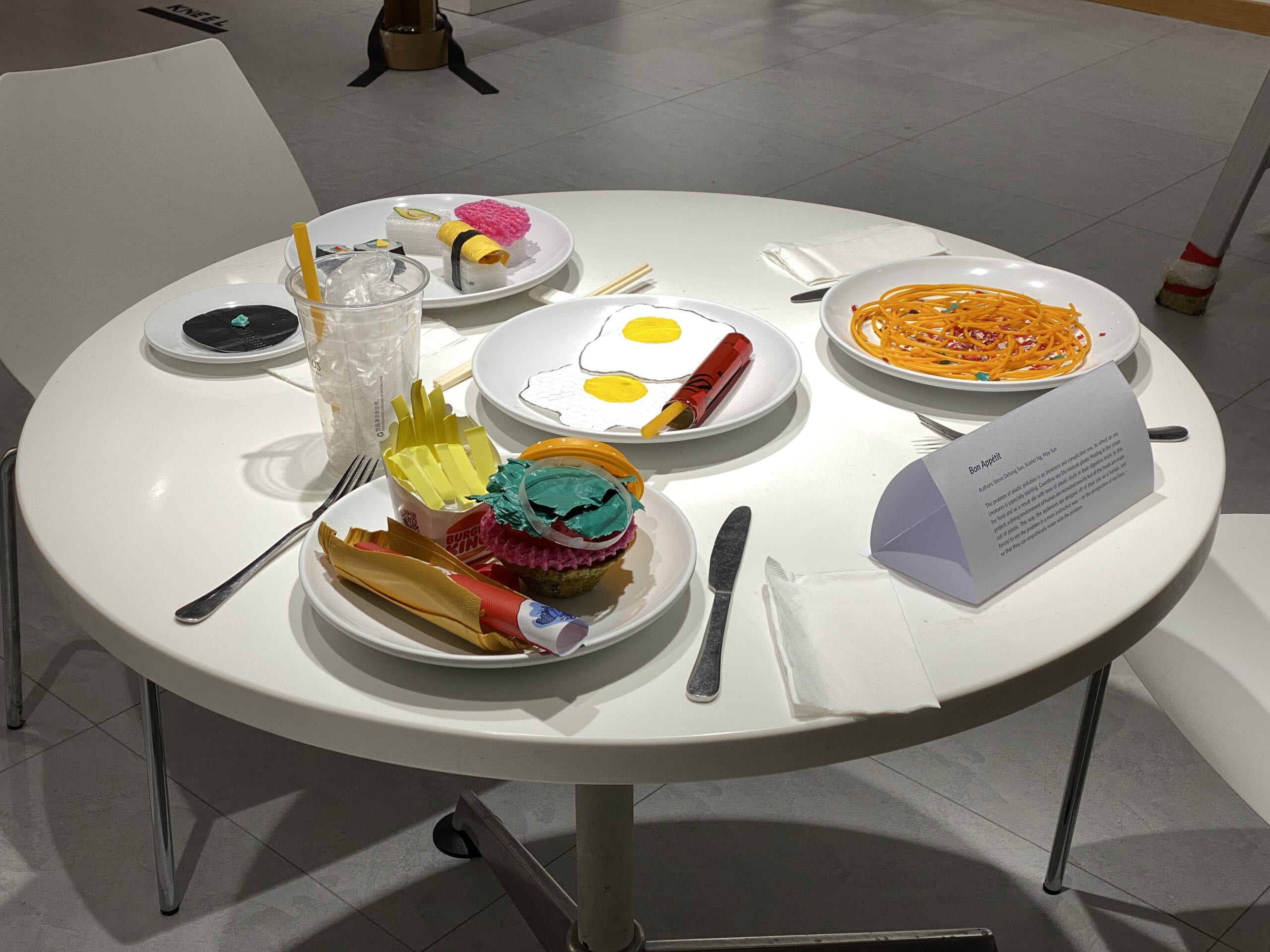PROJECT TITLE: Bon Appétit
PROJECT STATEMENT:
For our installation, we wanted to discuss the problem of plastic pollution, especially in the oceans and towards oceanic creatures. In our readings and research, we came across again and again how ocean creatures mistaken plastic for food, and died as a result of accumulating too much plastic in their digestive track. So, we decided to raise awareness of this problem specifically and try to do that empathic way, that is, to try to give off a feeling similar to what the sea creatures would feel — mistaking plastic for food.

DOCUMENTATION
So at first, we gathered a bunch of plastic garbage from everywhere, including r
andom bottles, coffee cup caps, plastic packaging and even abandoned 3d-printing filaments. And then from there we started thinking about what food we could make out of these. We were going for foods that are easily recognizable, at least to the people from where the food originated from. So we ended up making stuff like burgers, hot dogs, a plate of spaghetti, and a plate of sushi. We used mostly glue guns and scissors for the job, and tapes from time to time if we need the thing to stay a bit more rigidly.

We then managed to borrow a table and several chairs and cooking utensils, and we managed to put together a proper dinner table and successfully recreated a dining environment.
CONCLUSIONS:
Again, the goal was to try and give people the feeling that we thought the sea creatures would feel. After mounting the installation, we really felt like the feeling are accurately presented, especially with the addition of a dinner table and chairs, as well as the utensils, which are NOT plastic. The same surroundings, the same plates and utensils, but just the foods are in plastic. However, one thing that I feel like lacking is acknowledging the sea creatures in some way other than writing about them in the description, I feel like there might be something to improve on like writing a phrase like “POV: you are a sea turtle” on the table or something.
So by raising the empathetic feelings instead of directly telling and warning people about the problem (like saying “the plastic is gonna end up in your body blabla”), we argue that it would more successfully hit the feelings and really make people want to do something about the problem.
The difficulties creating the project is mainly finding the materials that have enough resemblance to the food we are creating out of it (to minimize the modification on them and frankly, make our job easier), but not enough to the food, so that the viewer could still tell that it is made out of plastic garbage we would throw away.
One of the takeaways is that maybe there are more effective ways of presenting the project so that it “packs a little bit more punch”. In another word, making it a little more visually interesting or fun to look at, for example we could still make the foods, but we can also add a model human (?) trying to eat the food, or maybe ourselves could be the ones picking up those foods and trying to eat them. I think this might give the audience more of a feeling that goes “nooooo don’t eat that those are plastic!”.
Slides for community presentation ↓
Leave a Reply